- Home
- slideshows
- miscellaneous
- 9 predictions from old sci-fi movies that actually came true
9 predictions from old sci-fi movies that actually came true
Space travel — 'Le Voyage Dans La Lune,' 1902

Robots — 'Metropolis,' 1927
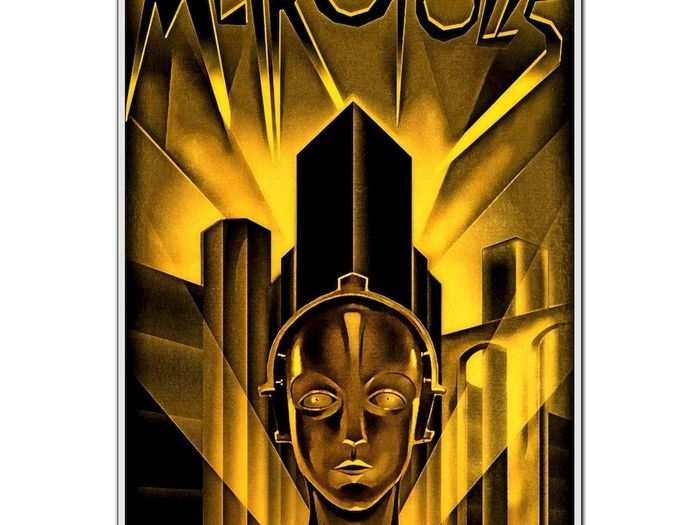
Though relatively unknown to mainstream movie audiences, sci-fi fans will have no trouble recognizing the iconic 1927 film "Metropolis."
From the vantage point of 2019, this film isn't easy to watch, since it's a silent, black-and-white film that runs well over two hours. (Though if you're so inclined, you certainly can watch Metropolis in its entirety on YouTube.)
And Metropolis broke a lot of fresh ground, including the first on-screen depiction of robots. In the film, an inventor with an uncanny 1920's resemblance to Doc Brown crafted a metallic humanoid robot who is then "reskinned" to resemble Maria, a character in the film.
Today, we take the inevitability of robots — and even human-like androids in particular — for granted. But as novel as this was at the time, today we are virtually overrun with increasingly realistic androids.
In 2014, Japan saw the debut of "Kodomoroid," a robot newscaster, and Osaka University's Professor Hiroshi Ishiguro has unveiled an android named Erica who is startlingly realistic. At the same time, robots like Boston Dynamics' Atlas and Honda's Asimo demonstrate that walking, running, opening doors, and even gymnastics are on the robot menu.
Earbuds — 'Fahrenheit 451,' 1966
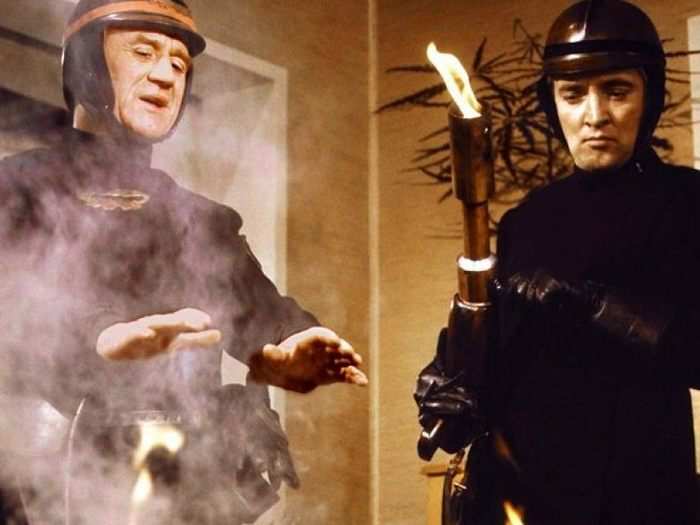
Ray Bradbury's iconic novel "Fahrenheit 451" has long been required reading for high schoolers everywhere, and François Truffaut tried his hand at making a film version in 1966.
Firemen never took on the role of starting fires, but that conceit wasn't intended to be taken as a prediction — it's a satirical parable. But there is a fascinating piece of technology in this film that sagely predicts the rise of earbuds and the modern earbud culture.
In "Fahrenheit 451," "seashells" are described as "thimble radios tamped tight, and an electronic ocean of sound, of music and talk coming in, coming in on the shore of her unsleeping mind." In 1966, the most personal audio available was the transistor radio. And though headphones existed, they were large and bulky affairs. Bradbury and Truffaut envisioned a world with tiny, thimble-sized earbuds that played private audio — both music and talk.
It wouldn't be until 2001 and the first Apple iPod that people started wearing seashells, submersing themselves in music and podcasts just like the film depicted.
Skype — '2001: A Space Odyssey,' 1968
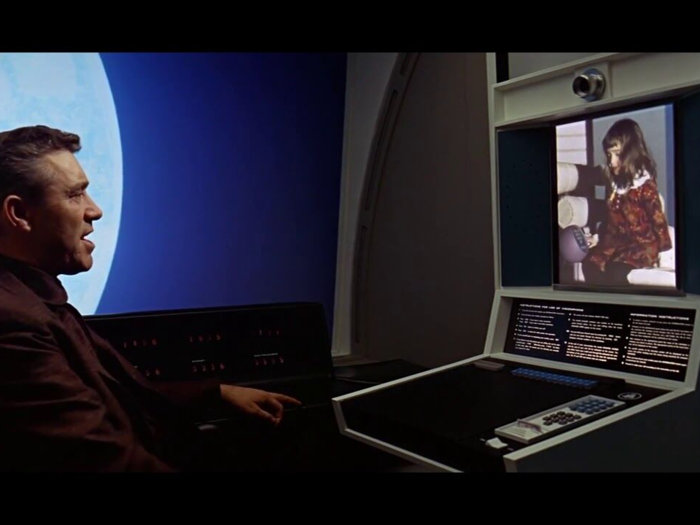
The list of things that "2001: A Space Odyssey" predicted could probably fill an article all by itself, from tablet computers to space tourism.
But one element in the film stands out: Skype.
To be fair, no one in "2001" actually logs into the Microsoft-operated video chat service. But video calling is featured prominently in the movie, such as when Dr. Heywood Floyd calls his family from a space station orbiting the earth.
There's even more innovation in this scene: Floyd inserts what looks like a credit card in the videophone to start the call, predicting their eventual ubiquity — in the 1960s, credit cards weren't nearly as common as they are today. And the two-minute call from space cost $1.70, which we can't figure out is a bargain or not.
The tech world has had a 50-year love affair with the concept of videophones, and numerous efforts were made to make them a reality. The Picturephone was first demonstrated at the 1964 World's Fair, and it surfaced at retail again and again over the years — such as AT&T's 1982 Picturephone and the 1992 VideoPhone 2500.
All were failures, but the internet, mobile broadband, and smartphones all conspired to eventually make video calling via apps like Skype and FaceTime everyday tools.
Smart homes — 'Demon Seed,' 1977
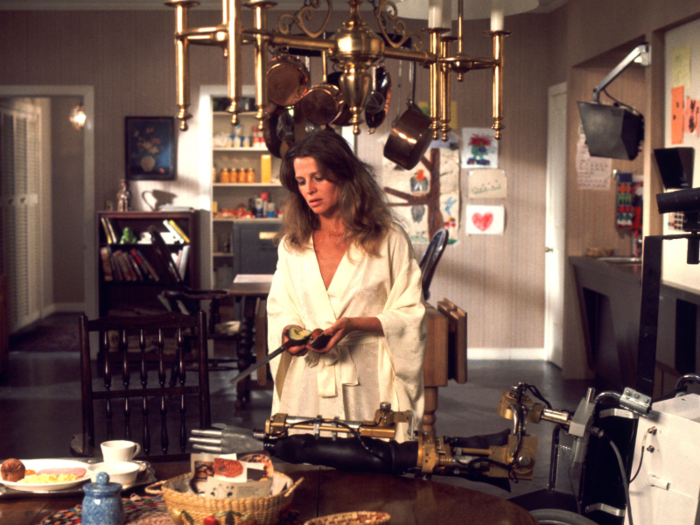
Some movie fans point to the goofy 1999 Disney film "Smart House" as the first major appearance of the Internet of Things and smart-home technology in a film. And admittedly, when the movie is actually called "Smart House," that's a little on the nose.
But you can go back further for the first example of a smart home in cinema: 1977's sci-fi-horror film "Demon Seed."
In "Demon Seed," a scientist develops Proteus IV, an artificially intelligent computer that starts off on a positive note by curing leukemia. But it quickly spirals out of control when the computer develops an unhealthy crush on its creator's wife, installs itself on a computer in their home, and takes control over all the technology and devices there.
The premise is terrible and the execution is pure 70's made-for-TV schlock, but what Proteus IV actually does is prescient — like a modern smart home, the computer can control lights, door and window locks, manages the home's alarm system, can show video of the front door like a smart doorbell, and even control devices like an automated swimming pool cover.
"Demon Seed" could easily be the blueprint for modern smart home technology from Philips Hue lights to Ring doorbells to Kevo smart locks, and dozens of other Internet of Things devices.
Mobile phones — 'Star Trek,' 1966
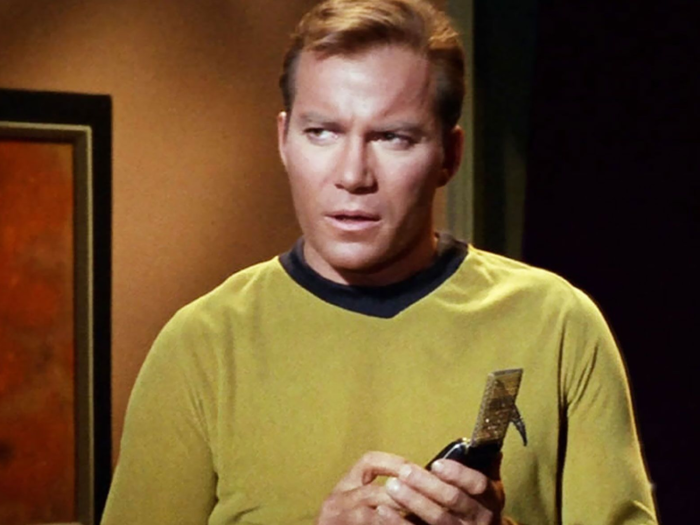
Purists might consider this one a cheat, but we'd be remiss not to include "Star Trek" in the list, since it predicted more technology than Leonardo di Vinci's notebook.
Let's be clear: "Star Trek" started as a TV series in 1966, and its three-year initial run set the blueprint for the show's many technological predictions. But all of that eventually made its way to the big screen, starting with "Star Trek: The Motion Picture" in 1979, qualifying it for this list.
And when we say that "Star Trek" invented the modern mobile phone, we mean it. The show's pocket communicator with the flip-up grid antenna literally inspired Motorola engineer Martin Cooper to design the world's first mobile phone in 1973.
His prototype, which would eventually become the Motorola DynaTAC was a veritable beast of a phone that weighed 2.5 pounds and had a 20-minute battery life. It took a decade to bring it to market, but 1983's DynaTAC started a revolution that led to ever smaller phones, flip phones, and eventually, smartphones.
Flying cars — 'Blade Runner,' 1982
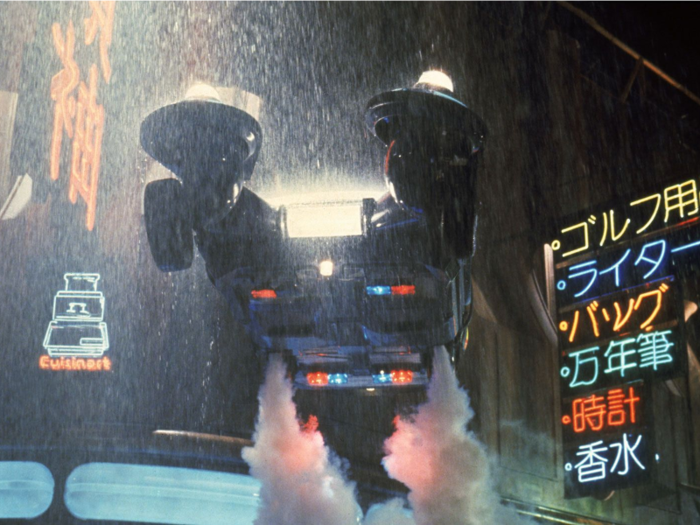
Few sci-fi movies are as revered as Ridley Scott's "Blade Runner," a film that put cyberpunk and sci-fi noir on the big screen for the first time.
The movie goes big on audacious predictions for the year 2019, including snakes on the verge of extinction, fully humanlike androids, ceaseless rain in LA, and space colonies.
But the movie got a few things right, too. The pyramid-shaped LA skyline implies that the city's skyscrapers are no longer legally required to have helipads on the roof — something that changed for real in LA in 2014 — and the film also predicted the rise (no pun intended) of flying cars. An implicit part of the "Blade Runner" universe is the Spinner, a flying car we see darting about the city.
Flying cars have been part of our "promised future" since the 1950s. And engineers have tried. Oh, how they've tried. Among the many attempts at flying cars, there has been the 1947 ConvAirCar Model 118, little more than an auto with wings, and 1990's Sky Commuter from Boeing. And inventor Paul Moller spent his life developing various versions of his Sky Car, a reliable fixture in the back pages of pop science magazine for decades.
And while we don't have flying cars quite yet, they're definitely, at long last, coming. A number of companies are readying what are essentially "passenger drones" — electric powered, self-flying, vertical takeoff and landing vehicles that look like oversized drones.
And they can ferry passengers without the need for a pilot. Boeing, AirBus, and Chinese company eHang are all developing oversized drone flying taxi services, and some are just a couple of years (in theory) from operation, and Uber has already announced the first five cities that may start flying.
Military drones — 'The Terminator,' 1984
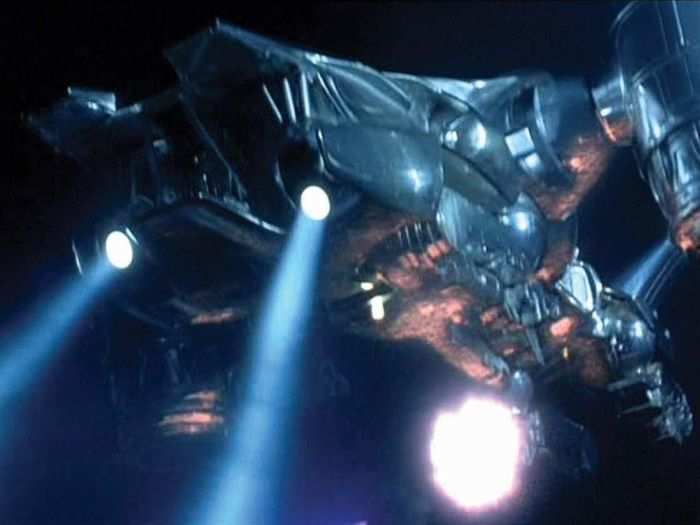
James Cameron's sci-fi blockbuster "The Terminator" gave us a lot of reasons to lie awake at night — a self-aware computer that triggers nuclear Armageddon, relentless killbots, and Bill Paxton's spikey punk hair.
Mixed in with all that are visions of the future that reveal Hunter-Killer drones — in essence, military flying drones armed with weapons.
By the early 1980s, the military already had extensive experience with "target drones" — radio-controlled unmanned vehicles that could be shot down for target practice — and reconnaissance drones, launched from ships and aircraft. But it wouldn't be until the "war on terror" in the 2000s that the US military would fulfill the predictions of "The Terminator" and deploy UAVs — military drones — with weapons on board.
The MQ-1 Predator, first used in 2001, is the first known military drone capable of firing weapons that were triggered remotely by ground operators. And lest you think that the autonomous Hunter-Killers of Sarah Connor's nightmares are pure fiction, the US military is even now grappling with the question of fielding artificially intelligent drones capable of making its own firing decisions.
Self-driving cars 'Total Recall,' 1990
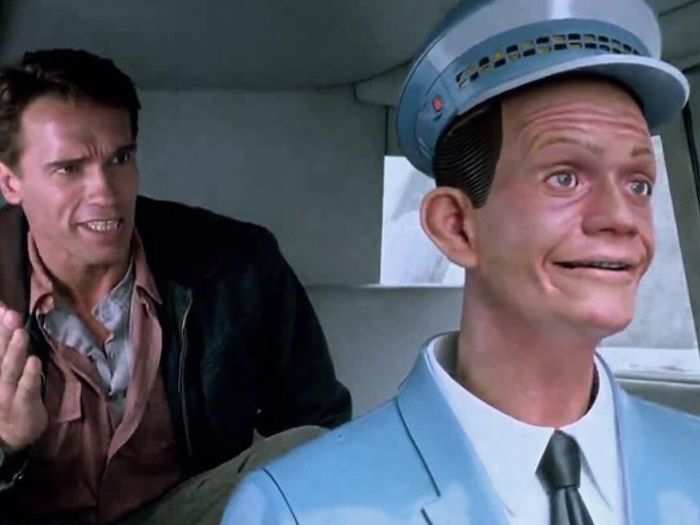
"Total Recall" is like a live-action cartoon painted in primary colors.
But amid the memory control technology, wall-sized TV screens, routine commercial flights to Mars, and alien superstructures under the Martian surface lies a few interesting predictions. The most prescient: self-driving cars.
The movie's Johnnycabs are probably what self-driving cars might look like from a late-'80s point of view. They featured a stylized android avatar in the driver's seat, and — if you happen to have the strength of an Arnold Schwarzenegger — ripping out the bot meant you could sit down and actually drive the car.
That seems a little silly and perhaps naive today, but that's only because we know exactly what self-driving cars look like — they're in the news and on the streets. Bristling with sensors, today's fully self-driving cars can drive themselves without the need for anyone or anything to sit in the driver's seat. And semi-self-driving cars are not far behind, though they do require a pilot to keep their hands on the controls for safety, at least for now.
Popular Right Now
Popular Keywords
Advertisement